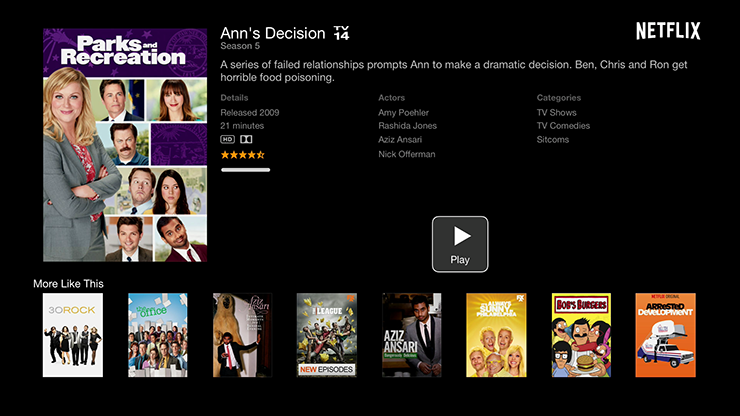As part of our Guest Writer Series, Reston resident Charlie Schoening relays his experiences unshackling himself from the cable box and replacing it with something more streamlined.
THE CUTTING OF THE CORD by Charlie Schoening
No, not a new addition to the family, but several months ago I was considering ways to save money around the house when I came to the realization that I was paying for 85 channels of cable that I never really watched. It was at this point that I started doing research on “Cutting the Cord” with all the pros and cons it entailed. This article will not be a step-by-step guide (plenty of information about that online), but basically captures my overall experience and general recommendations. Anyway, after much reading online, I decided on a strategy to install an HDTV antenna and subscribe to various streaming services for content.
The Antenna
The HDTV antenna is for receiving the signals for local stations (ABC, CBS, NBC, FOX, PBS, etc.) for watching major sporting events and nightly news. The signal is uncompressed high-definition (HD) and I would say that the picture quality is superior to the cable provided version of HD. Our antenna has only been installed for a week as of now and the signal has been great. I used Antenna Web to enter my zip code to get the coverage and signal strength in my area. Most of the stations I was interested in receiving were less than 20 miles away. This information helped with the purchase of the antenna since they are available in different strengths and directionalities. I did a lot of research and settled on the Winegard MS2002 HDTV antenna for around $60. It is a fixed (no rotating motor) omnidirectional (360 degrees of reception) antenna with a 30 mile range (more than sufficient based on Antenna Web).
I installed the antenna on my roof using a J-mast for around $20 since our home does not have an attic space. Installing in an attic would be ideal as it eliminates the issue of weather ruining your signal. Regardless, the installation went fairly smooth apart from the cabling, which was the real challenge. Intentionally putting a hole in your roof should never be taken lightly and finding a path for the wires to run is fraught with (literally) unforeseen twists and turns. Especially if you live in a 5-story town home like we do. My advice is to invest in good fish tape, otherwise hire a professional.
Once the antenna was connected, I was able to locate 59 channels including the major networks. However, I am interested in seeing what happens when winter rolls around and I am dealing with ice, wind and snow.
The Content
I currently use an Apple TV attachment and subscribe to Netflix, Amazon Prime and Hulu Plus. There is a lot of overlap but I expect this list to pare down over time. Right now, Apple TV and Netflix are my strongest candidates to keep. Next year, HBO will begin streaming their shows as well which is very exciting. The advantage of these streaming services is the a la carte model. I only pay for the shows that I want to watch, when I want to watch them. I also appreciate the lack of commercials in a house with small children. One concern, though, is losing the ability to DVR a program. Luckily, most of the shows I watch are available through the streaming services. However, a co-worker did tell me that he was able to attach a PC to his TV and record a program through available software.

The Bottom-line
The combination of having control over content while saving money has made this project worthwhile. The initial costs were the antenna and cabling ($100) and the Apple TV device ($100) for total of $200. The subscription costs, once I pare down, will probably be Netflix ($8/month), Amazon Prime ($99/year) and Apple TV (estimating 10 shows a month at $3 each), which is an annual cost of about $552 a year. My current cable subscription, on the other hand, is $65/month plus $18/month to rent the cable box for a total cost of $996 for the year. The comparison falls out to a savings of about $444 a year. This gives me a little wiggle room since my son is obsessed with watching endless episodes of Thomas and Friends on Apple TV. More important than the savings, though, is the ability to customize content to my family’s needs by not being beholden to the cable company’s packages.
This is definitely the wave of the future.
Do you have an interesting story idea? Shoot us an email at [email protected].


